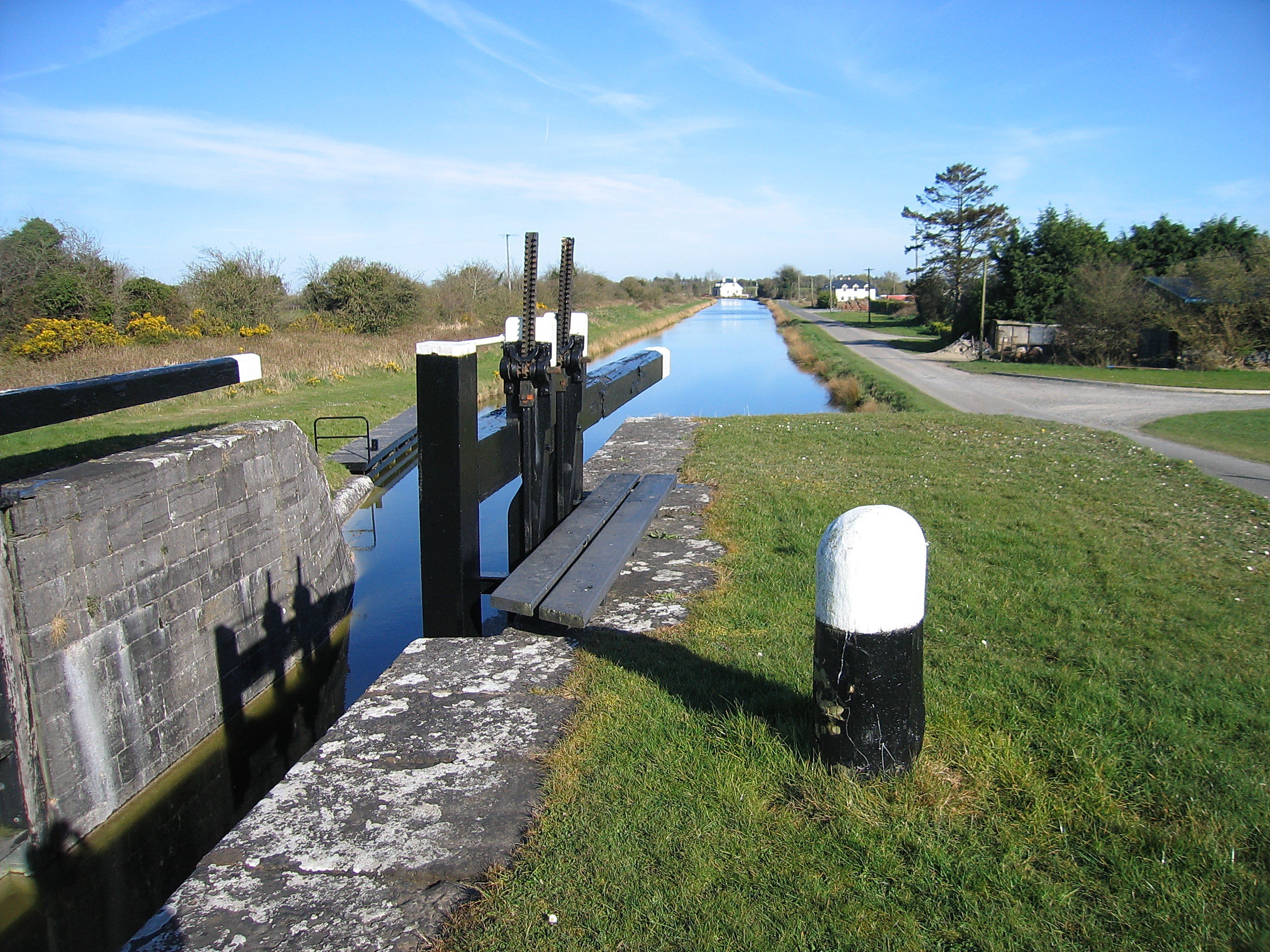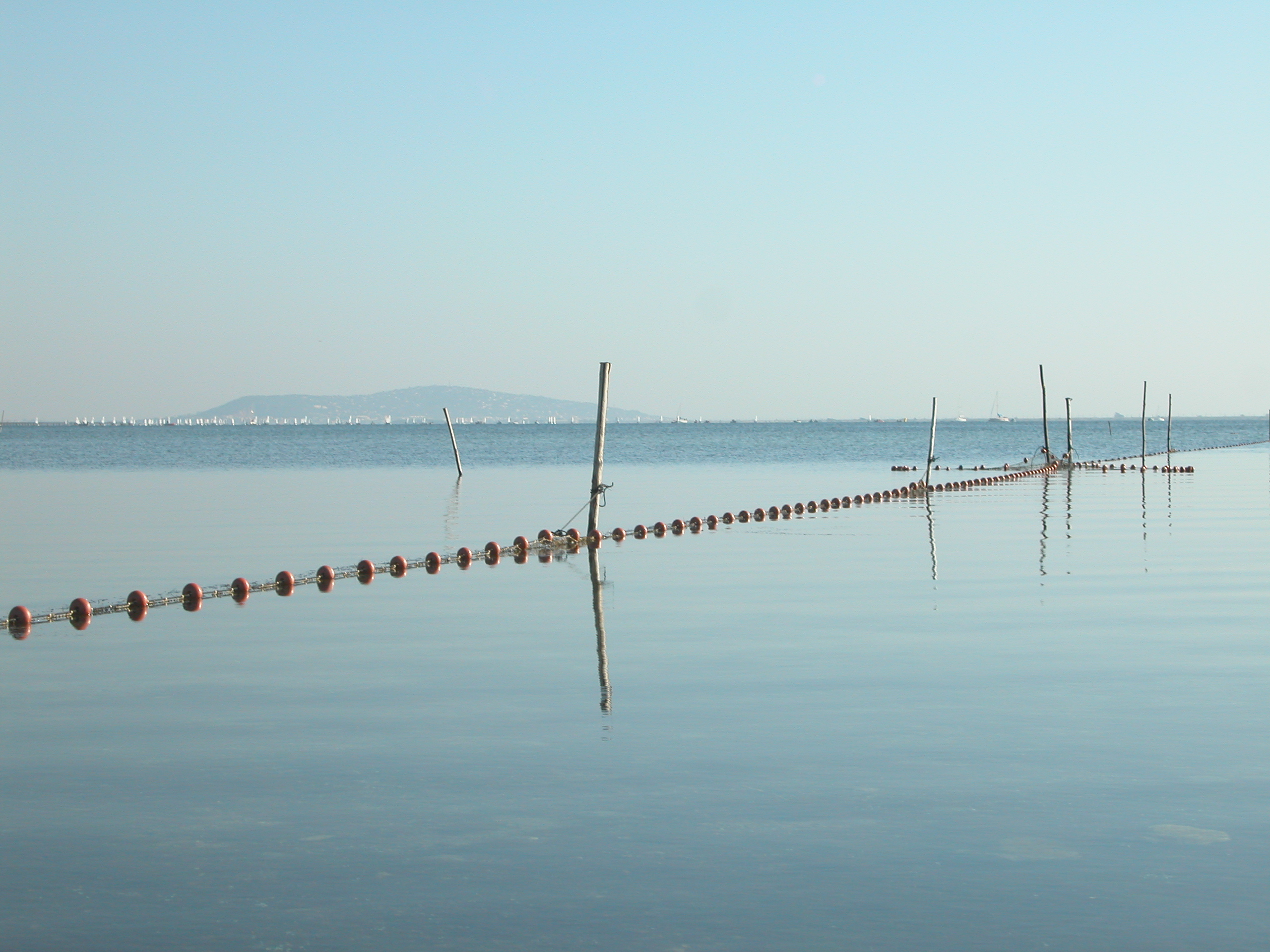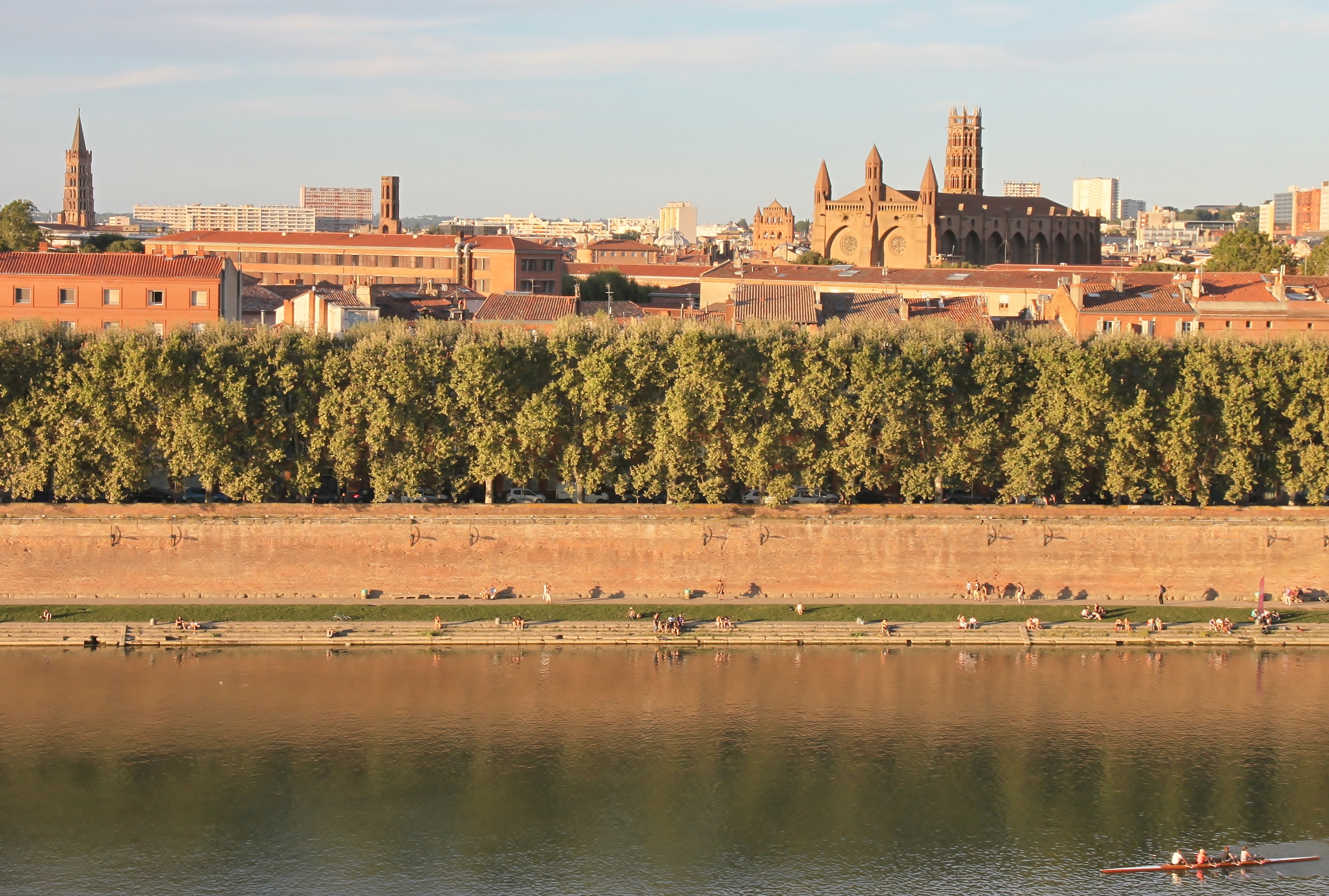|
Summit Level Canal
A summit-level canal, sometimes called a "watershed canal" or just "summit Canal", is an artificial waterway connecting two separate river valleys. The term refers to a canal that rises to cross a summit then falls down the other side. Typically, summit-level canals include a summit pound, a level stretch of water at the highest part of the canal, usually contained by locks that prevent the water from flowing downstream in either direction. Since water flows out when locks open to admit boats, the summit pound must have a water supply. By contrast, a ''lateral canal'' has a continuous fall only. History The first canal to connect rivers across a watershed was the Lingqu Canal ("Magic Canal") in China which connected the Xiang and Li rivers for military transport. Construction began in 223 BCE and the canal was in use by 214 BCE. [Needham, Joseph and Wang Ling ''Science and Civilisation in China'', Part 3 “Civil Engineering and Nautics” of Volume IV “Physics and ... [...More Info...] [...Related Items...] OR: [Wikipedia] [Google] [Baidu] [Amazon] |
|
 |
Canal Du Midi 02
Canals or artificial waterways are waterways or engineered channels built for drainage management (e.g. flood control and irrigation) or for conveyancing water transport vehicles (e.g. water taxi). They carry free, calm surface flow under atmospheric pressure, and can be thought of as artificial rivers. In most cases, a canal has a series of dams and locks that create reservoirs of low speed current flow. These reservoirs are referred to as ''slack water levels'', often just called ''levels''. A canal can be called a navigation canal when it parallels a natural river and shares part of the latter's discharges and drainage basin, and leverages its resources by building dams and locks to increase and lengthen its stretches of slack water levels while staying in its valley. A canal can cut across a drainage divide atop a ridge, generally requiring an external water source above the highest elevation. The best-known example of such a canal is the Panama Canal. Many cana ... [...More Info...] [...Related Items...] OR: [Wikipedia] [Google] [Baidu] [Amazon] |
 |
Loire
The Loire ( , , ; ; ; ; ) is the longest river in France and the 171st longest in the world. With a length of , it drains , more than a fifth of France's land, while its average discharge is only half that of the Rhône. It rises in the southeastern quarter of the French Massif Central in the Cévennes range (in the departments of France, department of Ardèche) at near Mont Gerbier de Jonc; it flows north through Nevers to Orléans, then west through Tours and Nantes until it reaches the Bay of Biscay (Atlantic Ocean) at St Nazaire, Saint-Nazaire. Its main tributaries include the rivers Nièvre (Loire), Nièvre, Maine (river), Maine and the Erdre on its right bank, and the rivers Allier (river), Allier, Cher (river), Cher, Indre (river), Indre, Vienne (river), Vienne, and the Sèvre Nantaise on the left bank. The Loire gives its name to six departments: Loire (department), Loire, Haute-Loire, Loire-Atlantique, Indre-et-Loire, Maine-et-Loire, and Saône-et-Loire. The lower ... [...More Info...] [...Related Items...] OR: [Wikipedia] [Google] [Baidu] [Amazon] |
|
Canal De L'Oise à L'Aisne
The Canal de l'Oise à l'Aisne (, literally ''Canal of the Oise to the Aisne'') is a summit level canal in the Hauts-de-France region (northern France), formerly Picardy. It connects the Canal latéral à l'Aisne at Abbécourt to the Canal latéral à l'Oise at Bourg-et-Comin. En route * PK 0 Junction with Canal latéral à l'Aisne at Abbécourt *PK 25.5 Pinon *PK 35 Pargny-Filain *Summit level reservoir, Bassin de Monampteuil *PK 38-40.5 Braye-en-Laonnois tunnel (2365m) to *PK 48 Junction with Canal latéral à l'Oise at Bourg-et-Comin See also *List of canals in France This is a list of the navigable canals and rivers in France. For reference purposes, all waterways are listed, including many that have been abandoned for navigation, mostly in the period 1925-1955, but some in later years. Although several source ... References External links Canal de l'Oise à l'Aisnenavigation guide; places, ports and moorings on the canal, by the author of ''Inland Wat ... [...More Info...] [...Related Items...] OR: [Wikipedia] [Google] [Baidu] [Amazon] |
|
 |
Canal Du Centre (France)
The Canal du Centre (), originally known as the Canal du Charollais (), is a French canal running from Digoin, where it now joins the Canal latéral à la Loire, to the Saône at Chalon-sur-Saône. It was opened in 1792 and was the first watershed canal allowing boats to pass from the north of France to the south. It is long and has 61 locks. Most of its traffic was generated by now abandoned coal mines at Montceau-les-Mines. History The canal was first suggested during the 16th century, under King Francis I and a detailed plan was prepared by Adam de Craponne in the time of Henry II. But nothing more happened until the Chief Engineer of Burgundy, Émiland Gauthey obtained building powers in 1783. He selected a route which joined the valleys of the Loire and Saône and provided adequate water supplies at the summit. The first stone was laid in 1784 by Prince de Condé and despite the intervention of exceptional floods on the Loire in 1790, which totally wrecked a new p ... [...More Info...] [...Related Items...] OR: [Wikipedia] [Google] [Baidu] [Amazon] |
 |
Canal Du Rhône Au Rhin
Canals or artificial waterways are waterways or engineered channels built for drainage management (e.g. flood control and irrigation) or for conveyancing water transport vehicles (e.g. water taxi). They carry free, calm surface flow under atmospheric pressure, and can be thought of as artificial rivers. In most cases, a canal has a series of dams and locks that create reservoirs of low speed current flow. These reservoirs are referred to as ''slack water levels'', often just called ''levels''. A canal can be called a navigation canal when it parallels a natural river and shares part of the latter's discharges and drainage basin, and leverages its resources by building dams and locks to increase and lengthen its stretches of slack water levels while staying in its valley. A canal can cut across a drainage divide atop a ridge, generally requiring an external water source above the highest elevation. The best-known example of such a canal is the Panama Canal. Many cana ... [...More Info...] [...Related Items...] OR: [Wikipedia] [Google] [Baidu] [Amazon] |
 |
Canal De Briare
The Briare Canal (, ) is one of the oldest canals in France. Its construction started in 1604. It was the first summit level canal in Europe that was built using pound locks, connecting the Rhone-Saône and Seine valleys. It is long and is part of the Bourbonnais route from Saint-Mammès on the Seine to Chalon-sur-Saône on the Saône. From Briare to Buges, the canal rises through the first 12 locks some and then falls through the remaining 24 locks. Construction The canal was initiated by Maximilien de Béthune, duc de Sully, with support from Henry IV in order to develop the grain trade, and to reduce food shortages. Its construction started in 1604 and was completed in 1642. Between 6,000 and 12,000 labourers worked on this canal which connects the basins of the rivers Loire and Seine. Hugues Cosnier obtained the contract to build the second canal crossing a watershed in Europe, involving many more locks than on the first. It was thus necessary to use locks. A stai ... [...More Info...] [...Related Items...] OR: [Wikipedia] [Google] [Baidu] [Amazon] |
 |
Montagne Noire
The Montagne Noire (; , known as the 'Black Mountain' in English) is a mountain range in central southern France. It is located at the southwestern end of the Massif Central at the juncture of the Tarn, Hérault and Aude departments. Its highest point is the Pic de Nore at . The mountain is within the Haut-Languedoc Regional Nature Park. The GSSP for the Tournaisian is near the summit of La Serre hill, in the commune of Cabrières, in the Montagne Noire.The GSSP was published by Paproth ''et al.'' (1991) The GSSP is in a section on the southern side of the hill, in an 80 cm deep trench, about 125 m south of the summit, 2.5 km southwest of the village of Cabrières and 2.5 km north of the hamlet of Fontès Fontès (; Languedocien dialect, Languedocien: ''Fontés'') is a Communes of France, commune in the Hérault Departments of France, department in southern France. Population See also *Communes of the Hérault department References .... Gall ... [...More Info...] [...Related Items...] OR: [Wikipedia] [Google] [Baidu] [Amazon] |
|
Pierre-Paul Riquet
Pierre-Paul Riquet, Baron de Bonrepos (; 29 June 1609 (some sources say 1604) – 4 October 1680) was the engineer and canal-builder responsible for the construction of the Canal du Midi. Early life Born as Paul Riquet in Béziers, Hérault, France, he was the eldest son of solicitor, state prosecutor and businessman François-Guillaume Riquet. As a youth, Riquet was only interested in mathematics and science. Career As a '' fermier général'' ("farmer-general") of Languedoc-Roussillon, he was a tax farmer responsible for the collection and administration of the gabelle (salt tax) in Languedoc. He was appointed collector in 1630, and was also a munitions provider to the Catalan Army. Riquet became wealthy and was given permission by the King to levy his own taxes. This gave him greater wealth, which allowed him to execute grand projects with technical expertise. In 1651, he bought the Château de Bonrepos, next to Verfeil in the northeast of Toulouse. The Canal du Midi l ... [...More Info...] [...Related Items...] OR: [Wikipedia] [Google] [Baidu] [Amazon] |
|
 |
Mediterranean
The Mediterranean Sea ( ) is a sea connected to the Atlantic Ocean, surrounded by the Mediterranean basin and almost completely enclosed by land: on the east by the Levant in West Asia, on the north by Anatolia in West Asia and Southern Europe, on the south by North Africa, and on the west almost by the Morocco–Spain border. The Mediterranean Sea covers an area of about , representing 0.7% of the global ocean surface, but its connection to the Atlantic via the Strait of Gibraltar—the narrow strait that connects the Atlantic Ocean to the Mediterranean Sea and separates the Iberian Peninsula in Europe from Morocco in Africa—is only wide. Geological evidence indicates that around 5.9 million years ago, the Mediterranean was cut off from the Atlantic and was partly or completely desiccated over a period of some 600,000 years during the Messinian salinity crisis before being refilled by the Zanclean flood about 5.3 million years ago. The sea was an important rout ... [...More Info...] [...Related Items...] OR: [Wikipedia] [Google] [Baidu] [Amazon] |
 |
Étang De Thau
The Étang de Thau (; ) or Bassin de Thau is the largest of a string of lagoons (''étangs'') that stretch along the France, French coast from the Rhône river to the foothills of the Pyrenees and the border to Spain in the Languedoc-Roussillon. Although it has a high salinity, it is considered the third largest lake in France. Description It is about long and 8 km wide, with an area of . The mean depth of the lagoon is , but in the central navigation channel it can be deep. Near Bouzigues is a depression with a diameter of . This 'Fosse de la Vise' is the source of a hot spring that feeds the spa in Balaruc. Its size and depth, which distinguish it from other lagoons of the region, is explained by the geomorphology of the region since the syncline formed by Fold (geology), folding produced the corresponding anticline of the Gardiole in the north-east. Until relatively recently, the lagoons from Marseillan, Hérault, Marseillan to the Rhône River, Rhône were a cont ... [...More Info...] [...Related Items...] OR: [Wikipedia] [Google] [Baidu] [Amazon] |
 |
Atlantic Ocean
The Atlantic Ocean is the second largest of the world's five borders of the oceans, oceanic divisions, with an area of about . It covers approximately 17% of Earth#Surface, Earth's surface and about 24% of its water surface area. During the Age of Discovery, it was known for separating the New World of the Americas (North America and South America) from the Old World of Afro-Eurasia (Africa, Asia, and Europe). Through its separation of Afro-Eurasia from the Americas, the Atlantic Ocean has played a central role in the development of human society, globalization, and the histories of many nations. While the Norse colonization of North America, Norse were the first known humans to cross the Atlantic, it was the expedition of Christopher Columbus in 1492 that proved to be the most consequential. Columbus's expedition ushered in an Age of Discovery, age of exploration and colonization of the Americas by European powers, most notably Portuguese Empire, Portugal, Spanish Empire, Sp ... [...More Info...] [...Related Items...] OR: [Wikipedia] [Google] [Baidu] [Amazon] |
 |
Garonne
The Garonne ( , ; Catalan language, Catalan, Basque language, Basque and , ; or ) is a river that flows in southwest France and northern Spain. It flows from the central Spanish Pyrenees to the Gironde estuary at the French port of Bordeaux – a length of , of which is in Spain (Val d'Aran);Le bassin versant de la Garonne Syndicat Mixte d'Études & d'Aménagement de la Garonne the total length extends to if one includes the Gironde estuary between the river and the sea. Its basin area is , which increases to if the Dordogne (river), Dordogne River, which flows from the east and joins the Garonne at Bec d'Ambès to form the Gironde estuary, is included. Umayyad and Duchy of Aquitaine , Aquitanian forces fought the Battle of the River Garonne in 732 beside the river near present-day ... [...More Info...] [...Related Items...] OR: [Wikipedia] [Google] [Baidu] [Amazon] |